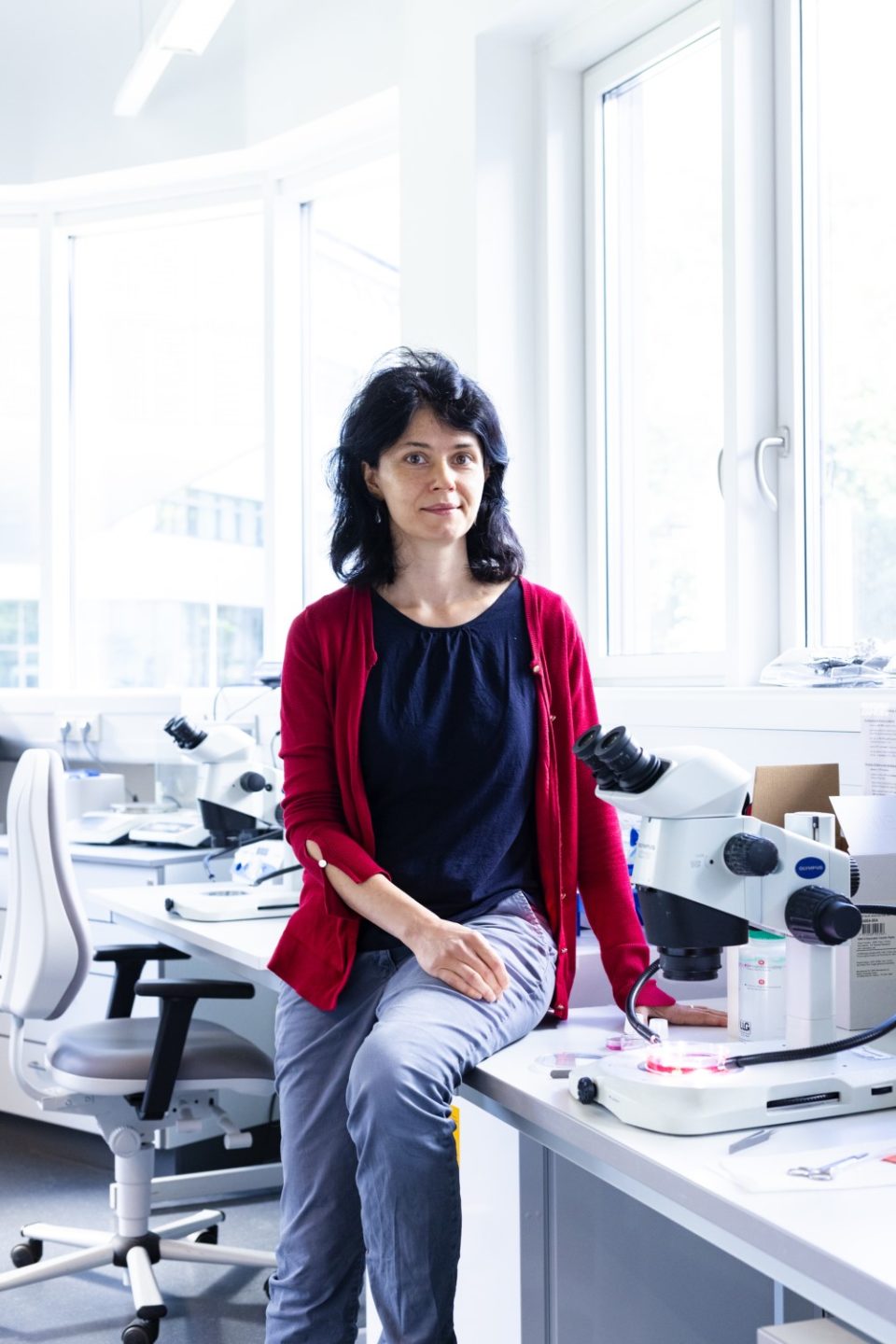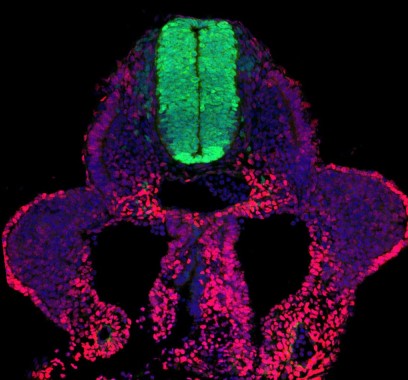October 1, 2021
From Blob to Baby
How a Single Cell Becomes an Organism
Everybody knows how babies are made but most people do not think about how a fertilized egg actually turns into a human being. How do single cells take on the form of a hand, and others that of the nervous system for example? Understanding the underlying mechanisms is what drives developmental biologists such as Professor Anna Kicheva from the Institute of Science and Technology (IST) Austria. Her research could also have an impact on understanding diseases, such as cancer.
At the beginning, we are all just a blob. In other words, a clump of cells that all look the same. The cells multiply, increasing the size of the clump. And then something amazing happens: cells move in specific directions and change into special cell types such as neurons. Little arms and legs start forming, small eyes become visible, and the heart beats for the first time. But what is controlling these cells? This is where so-called morphogens come in.
Sprouting Fingers
In different parts of the developing embryo, special cells start producing these molecular signals that spread through the tissue, forming zones with different amounts of morphogens. Zones closer to morphogen-producing cells have higher concentrations, whereas zones further away have lower concentrations.
Cells can sense the levels of morphogens around them and use this information to gauge their location. “For example, to make a hand, one of the first things that morphogens define is what will become a digit and what will become an interdigit territory, a ‘non-finger’,” explains Professor Anna Kicheva. This is the point at which the number of fingers is determined. The ‘non-fingers’ are subsequently lost which leaves the spaces between the fingers. There are no specific morphogens for each finger, however, meaning no ‘pinky-morphogen’ exists. The location of the finger will determine the type of finger.

Similar Beginnings
The formation of the hands and other limbs is not the only part of development in which morphogens play a key role. In all the different events throughout development, morphogens are responsible for organizing cells. Together with her team, the developmental biologist Anna Kicheva focuses on a vital part of the nervous system: the spinal cord.
Using fertilized chicken eggs and mice, she wants to learn more about the development of vertebrates, including humans. Although visually a human baby does not have much in common with a fluffy chick or a furry mouse – as an early embryo, it’s difficult to tell them apart. In all of them, the curved spine in which the spinal cord is located becomes visible early on.
The spinal cord in vertebrates serves an essential function: It transmits instructions about movement from the brain to the body and carries back information about the environment from the body to the brain. Because of this, the basic structure of the spinal cord has not changed a lot throughout evolution and is very similar in humans and our furry friends, allowing scientists like Kicheva to study morphogens and gain an insight into our development as humans.
Creating Different Dimensions
Although the basic building plan of the spinal cord is similar between species, its dimensions vary from just a few millimeters, in for example the smallest frog, up to several meters, in the largest whale.
“The question of what creates the differences between species is not well understood,” explains the researcher who first started working on spinal cord development at the Francis Crick Institute in London, “it’s not going to be one answer, but rather several factors that are contributing to these differences.” One of the key features is the speed and the amount of time over which cells multiply before becoming a specialized cell like a neuron. This is controlled by complex mechanisms and morphogens also play a role. The Kicheva group works on understanding these mechanisms better. Another factor is the amount of cells in the initial pool of allocated cells for, say, the spinal cord. If there are more cells available at the beginning then it is easier to make a bigger organ.

Morphogens in Health and Disease
“Historically, it became clear that morphogens are extremely critical because if you remove them, the embryo won’t develop properly,” says Kicheva. The interesting thing now is to understand the exact mechanisms. “There are a lot of dynamics involved and now we have opportunities to study the process with new quantitative approaches. That’s one of the features that makes it very exciting to study right now,” raves the Bulgarian scientist.
Morphogens do a lot more than just instruct cells to become the spinal cord. “After the spinal cord life has begun, morphogens take on a whole new role,” describes the developmental biologist. As with most organs, the spinal cord contains many different types of neurons. In an ongoing project, Anna Kicheva studies how morphogens ‘tell’ cells what type of neuron to become.
“Morphogens have really fundamental functions in development and also in the adult organism,” says Kicheva. “Morphogen signaling is associated with various types of cancers and developmental defects.” Understanding these mechanisms may build the foundations for potential treatments. Needless to say a lot more has to be learnt and many exciting discoveries remain to be made on what shapes blobs into babies.
Animal wellfare
In order to better understand fundamental processes, for example, in the fields of neuroscience, immunology, or genetics, the use of animals in research is indispensable. No other methods, such as in silico models, can serve as alternative. The animals are raised, kept, and treated according to the strict regulations of Austrian law. All animal procedures are approved by the Federal Ministry of Education, Science and Research.



